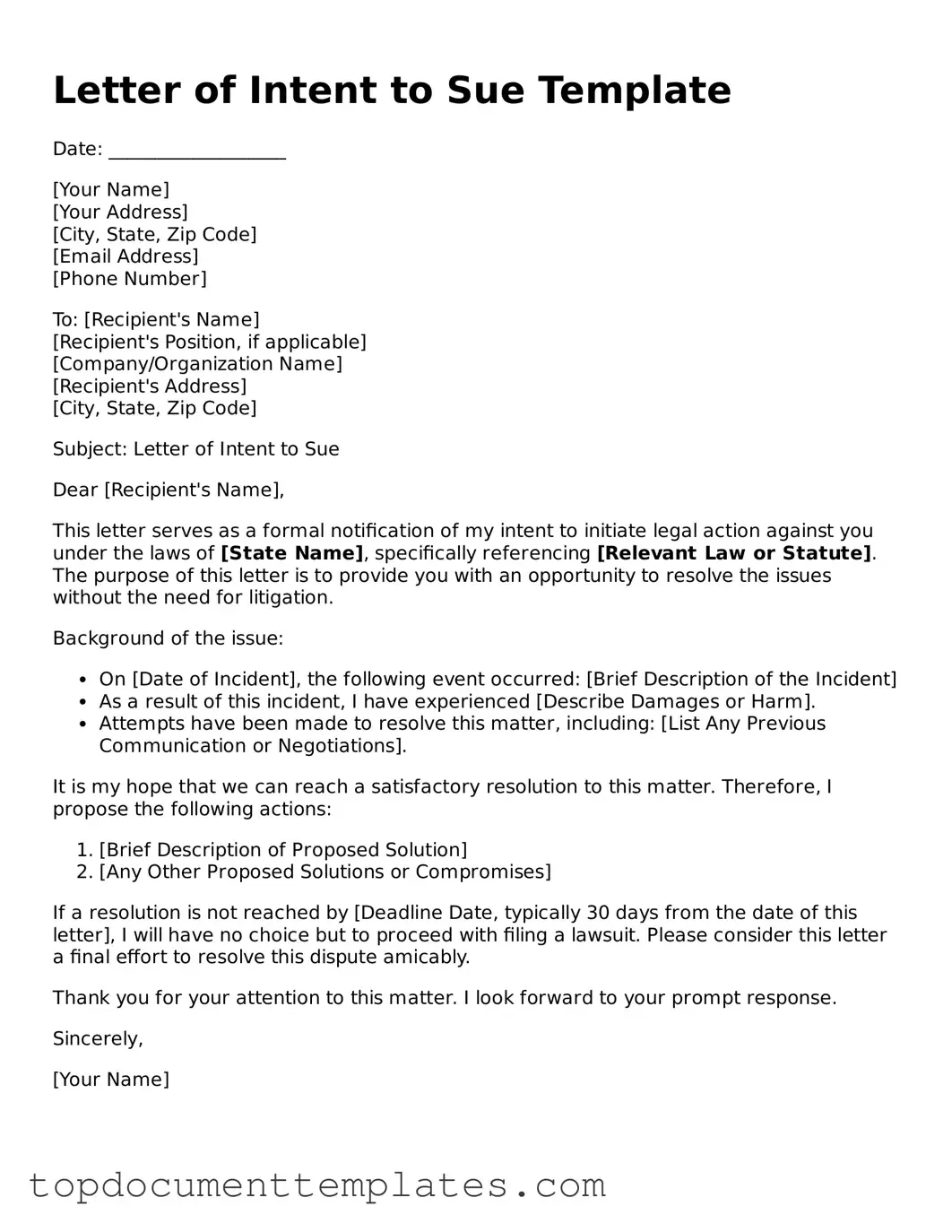When a dispute arises and negotiations fail to yield a satisfactory resolution, individuals or organizations may consider taking legal action. Before diving into the complexities of a lawsuit, a Letter of Intent to Sue serves as a crucial preliminary step. This document outlines the sender's intention to initiate legal proceedings, providing the recipient with a clear understanding of the grievances at hand. It typically includes essential details such as the nature of the dispute, the specific claims being made, and a request for resolution. By sending this letter, the sender not only signals their seriousness but also opens the door for potential settlement discussions. The form can help clarify expectations, establish a timeline for responses, and may even assist in avoiding costly litigation altogether. Understanding how to effectively craft and utilize a Letter of Intent to Sue can empower individuals to navigate the legal landscape more confidently, potentially leading to a more amicable resolution without the need for a courtroom battle.
